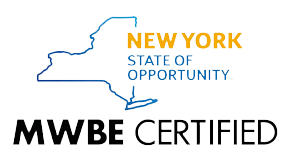Email content marketing is possibly one of the most effective ways for brands to stay connected to their customers. It’s also a great strategy to create brand loyalty, as it allows you to build meaningful relationships with new and returning customers.
But getting started can feel overwhelming, especially if this is your first time launching an email marketing campaign.
In this guide, we’ll walk you through the basics of launching a company e-newsletter. Already have one? No problem! These tips can also help you revisit your current email strategy, as you discover ways to increase engagement and subscribers.
Step 1: Building the List
Before launching a successful e-newsletter, you first need subscribers. This task can seem daunting, but there are a few simple approaches to building your email list from scratch.
Website Sign-Up Form
You’ve probably seen this feature on other websites—and for good reason. When you make it quick and easy for users to sign up for your emails, you instantly start generating new subscribers, without much leg work.
Pro Tip: If you decide to include a pop-up feature, avoid having this “ask” be the first thing users see when they enter the site. Content Management Systems (CMS) like WordPress allow you to stagger pop-ups, so they appear “after” a certain period of time or once the user has scrolled down the page.
This is a smart email sign-up strategy, as new users may not be ready to give you their personal information until they’ve had time to get to know your brand and services.
Social Promos
You can also promote your company’s newsletter on social media, where you already have a collection of followers. This is another easy way to build your list.
Blog Posts
If you regularly publish articles on your website, consider adding a call to action in each post that encourages users to sign up for your newsletter. If users already enjoy the content you produce, there’s a high probability they’ll want to stay connected to you via email.
Step 2: Choose Your Automation Platform & Brand Design
From Mailchimp to Constant Contact, Hubspot, Salesforce Marketing Cloud or Klaviyo, many email automation platforms exist. To help you decide, consider your industry, current CMS, and marketing goals.
Klaviyo, for instance, is typically recommended for eCommerce websites, but many platforms like Shopify have their own email automation tools you can use. Hubspot, on the other hand, offers an all-in-one marketing suite of services, including social media, website development, and email marketing.
Once you decide on the right automation tool, you’ll need to create an email template for future campaigns that match your company’s brand messaging and design.
Pro Tip: Email marketing is not an invitation to experiment with different colors, designs, or images that oppose your brand’s style guide. Instead, it should be an extension of your brand and work in tandem with other marketing channels, with minimal updates. Therefore, users should be able to tell if emails are from your company.
Step 3: Create a Content Calendar
Once you build your template, you’ll want to start brainstorming content ideas to feature in upcoming newsletters.
When creating an email content marketing calendar, consider the following:
- How often do you plan to email subscribers?
- When should you publish the content that will generate the maximum engagement?
- What type of tone should you use for emails (i.e., friendly and informal?)
- What kind of content does your audience find most interesting?
A common mistake businesses make with email marketing is recycling the same resources, articles, and news each month. Often this is a result of not having enough time to invest in your email marketing strategy.
Creating a content calendar that includes proposed topics, creative subject lines, and valuable resources to feature in each newsletter allows you to plan ahead while keeping your emails fresh, relevant, and worth the read!
Content calendars also help you keep emails consistent and on-trend with upcoming events (i.e., holidays, awareness months, and other topics that may appeal to your readers). Further, if you’re managing multiple marketing touch points, you can ensure all channels work together to engage users and maintain brand consistency.
Pro Tip: When creating content for your email campaigns, try to include resources you don’t currently have on other platforms. This provides more exclusivity to subscribers and essentially rewards them for staying connected to your newsletter.
Step 4: Send a Welcome Email
Businesses often overlook this step! When someone does a thoughtful deed, your first instinct is to thank them. So why not do this with your subscribers? After all, you’re excited and grateful they are taking the time to learn more about your company via your newsletter, so what better way to thank them—than by actually “thanking” them?
Welcome emails are created for new subscribers to greet and thank them. But they do a lot more:
- They confirm the user has given you the correct email address.
- They assure subscribers that they signed up successfully.
- They help users become familiar with your email template.
Quick Tip: It’s a smart idea to include a confirmation message to users once they have signed up. If you include a welcome message, notify them that an email was sent to their inbox.
You can also include a verification prompt to decrease spam or bots signing up for your newsletter.
Step 5: Start Tracking Email Performance
Once you begin regularly sending emails to subscribers, be sure to pay attention to the data your automation platform provides to keep track of the following:
- How many subscribers are active
- How many people have unsubscribed
- How many “opens” your emails receive
- How many “clicks” you generate and what content is being resonated the most?
Regularly monitoring your emails’ performance can help you identify which content generates better engagement and which subject lines are getting ignored.
Pro Tip: Investing in A/B testing is another effective way to help you understand more about the style of content users want to read. For more information on how to start A/B testing, contact our team for help!
Get Started with Email Content Marketing
Whether you’re new to email marketing, or your current campaigns are not generating sufficient engagement, partner with East Shore Marketing to help you build an ROI-based content strategy.
From content planning and creation to email automation and A/B testing, we can help grow your email list and transform your subscribers into loyal brand ambassadors.
Ready to start building the best marketing email campaigns? Call or email us today to schedule a consultation.

